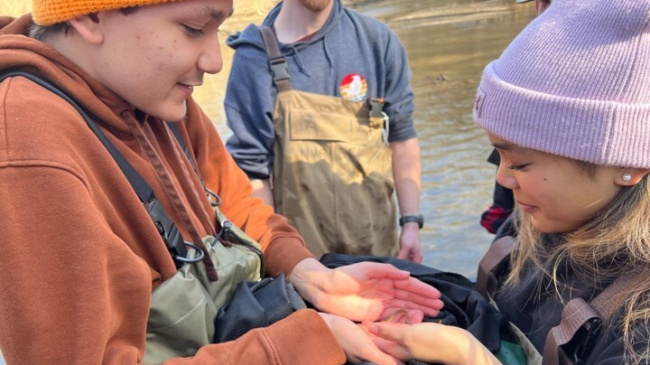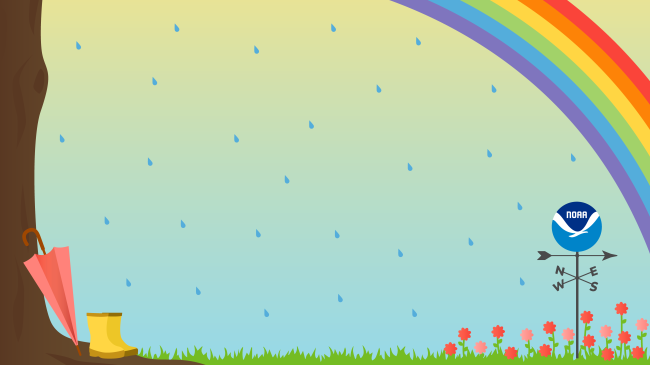Every year, NOAA undergraduate scholars venture out to complete summer internships at NOAA facilities around the country. We invited these intrepid scholars to take over our social media channels once a week to share highlights from their research experiences. Here’s a collection of their #TakeoverTuesday posts.
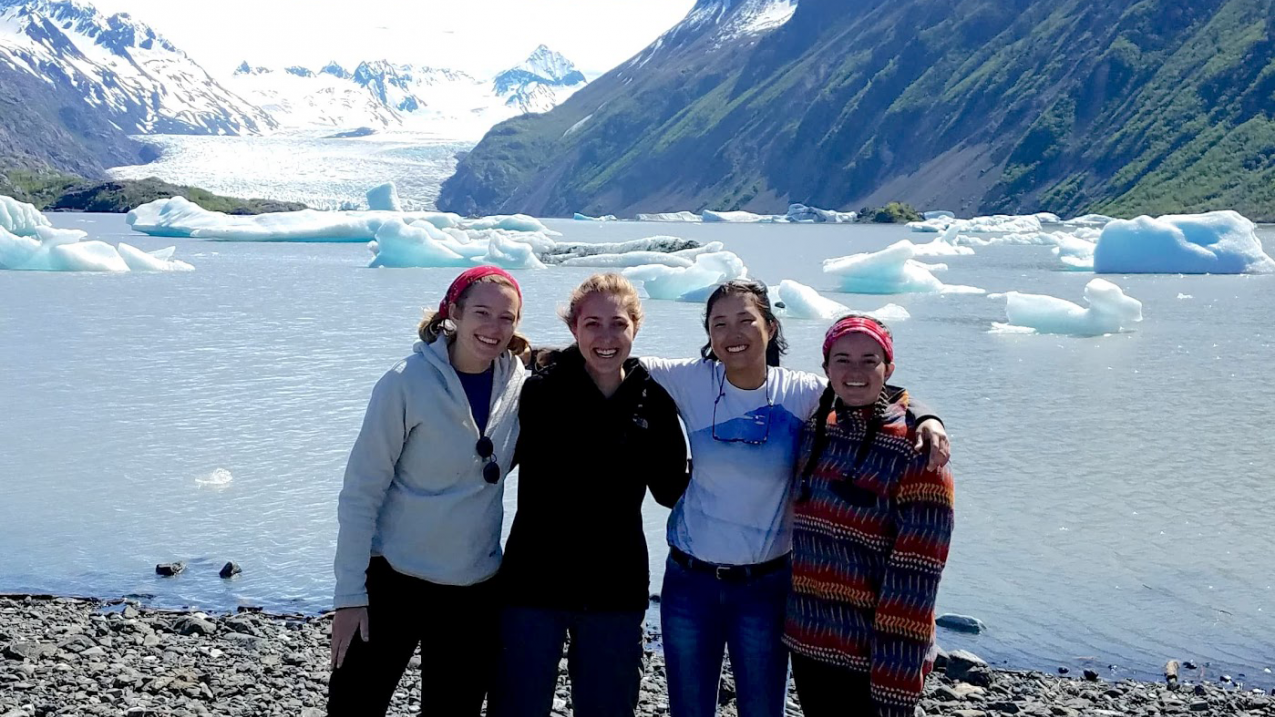
NOAA Scholars (left to right) Adrian Teegarden, Anna Lowien, Ashley Bang and Megan Hazlett are all doing research projects related to the life cycles and habitats of salmon and forage fish in the Kenai Peninsula of Alaska. As you can see, they've been out conducting field work in some of Alaska's most beautiful bays! (Image credit: Kara Zwickey)
Ernest F. Hollings undergraduate scholars and Educational Partnership Program with Minority Serving Institutions (EPP/MSI) undergraduate scholars choose an opportunity at any NOAA facility for a 10-week summer internship. Learn about our programs through the eyes of our scholars as they share personal accounts from their research with NOAA.
The application deadline was extended until February 15, 2019. New #TakeoverTuesday posts will be added throughout the application season. Follow #NOAAscholars on Facebook, Twitter, and Instagram.
March 26: Danielle Olive and Jendahye Antoine
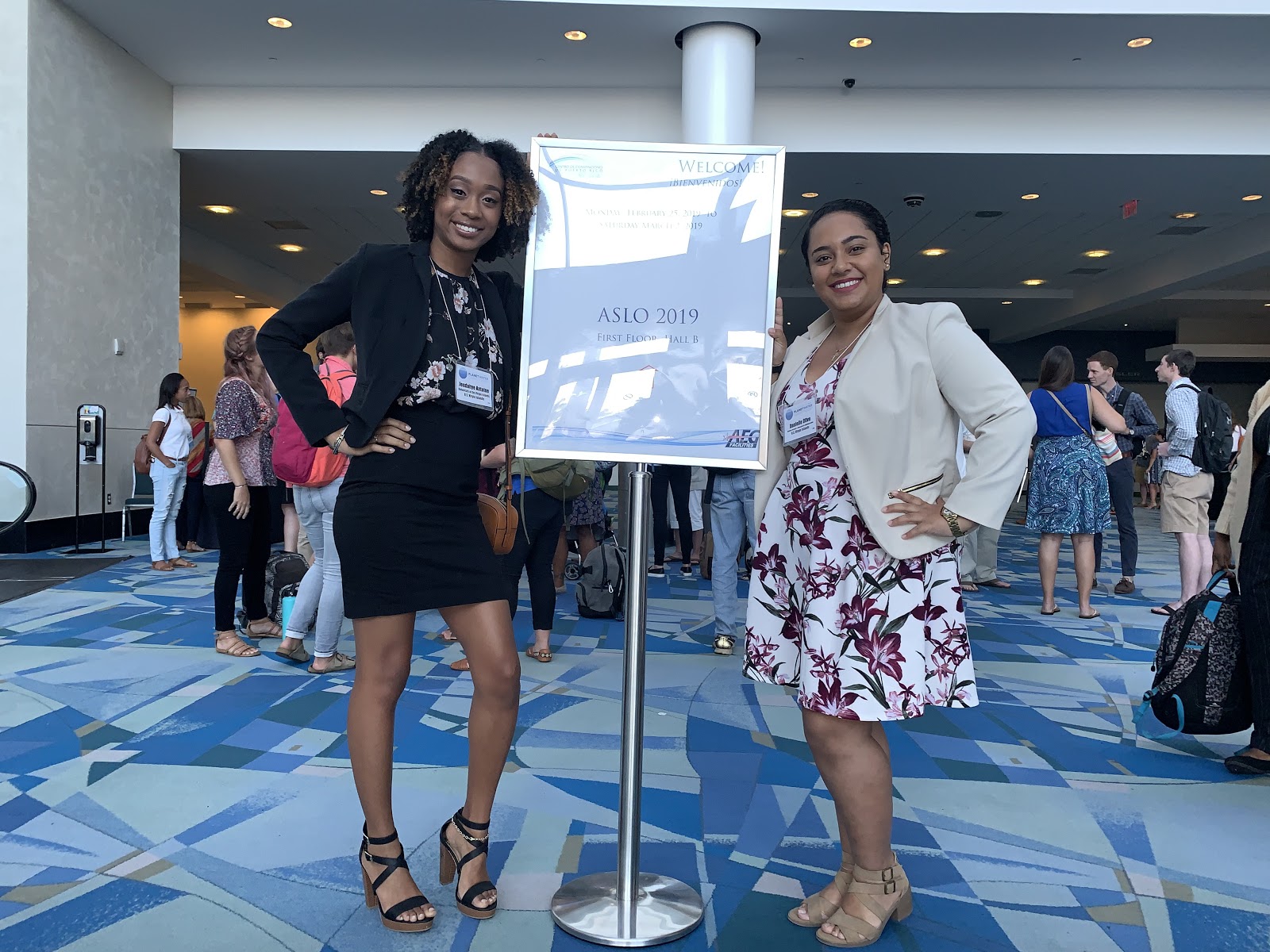
Hi there, this is Danielle Olive (right) and Jendahye Antoine (left), both current NOAA Educational Partnership Program with Minority Serving Institutions (EPP/MSI) undergraduate scholars, class of 2017 and 2018, respectively. We attend the University of the Virgin Islands (UVI offsite link) in St. Thomas, here today to give some awesome #TakeoverTuesday insight! Recently, we attended the 2019 ASLO Aquatic Sciences Meeting in beautiful San Juan, Puerto Rico. With support from the EPP/MSI, we were given the opportunity to attend and present at this year’s ASLO conference. We presented posters on the research conducted during our summer internships and during the school year. I, Danielle, presented my research entitled, “The Hematological Impacts of Hypoxia on the Clearnose Skate,” where I investigated the physiological effects of low oxygen levels on clearnose skates and found possible evidence of red blood cell swelling as an adaptive mechanism. I conducted this research at the Virginia Institute of Marine Science Eastern Shore Laboratory offsite link during my second summer internship as part of the scholarship program. I, Jendahye, presented my research entitled, “Recruitment and Succession in Space Created by Coral Mortality,” in which I investigated what becomes of coral spaces once coral dies, phase-shifts between species over time, and how this is applicable to developing management strategies for coral reefs and the possible implications of climate change on coral cover. I conducted this research as my year-long academic research project at UVI as a requirement of the EPP undergraduate scholarship. This wonderful experience at ASLO gave us the opportunity to network with research scientists and peers regarding oceanography research, and has allowed us to make connections with researchers worldwide. Our experience as NOAA scholars has been, and continues to be, life-changing in our pursuits as marine scientists!
March 12: Delaena Stephens
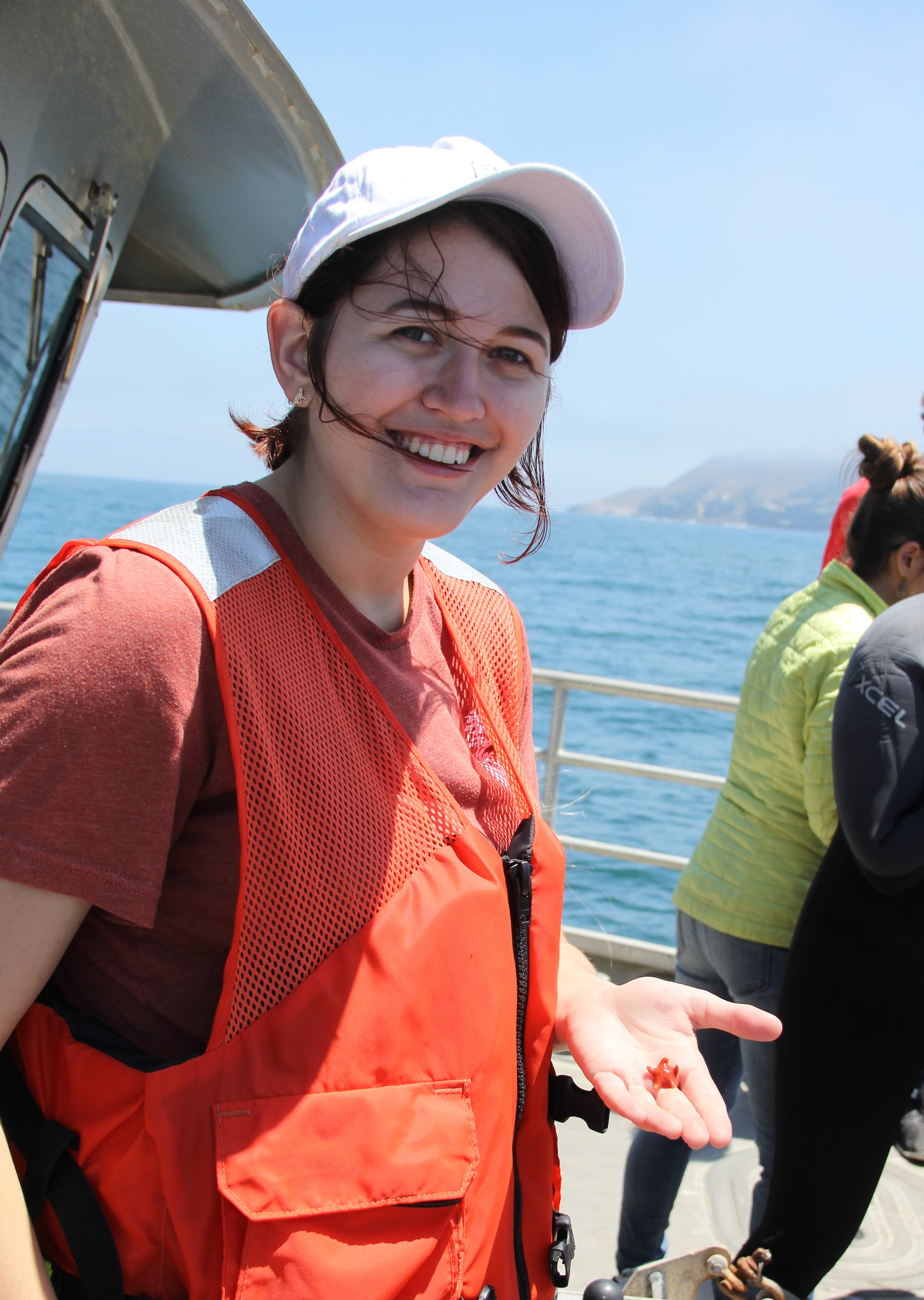
I’m Delaena Stephens, an EPP/MSI undergraduate scholar from the class of 2018 and a biology major at the University of La Verne. Last summer, I interned at NOAA headquarters in Silver Spring, Maryland, at the Office of National Marine Sanctuaries. With the help of my mentor, Kathy Broughton, I spent the summer compiling an inventory of soniferous, or sound-producing, marine species inhabiting Channel Islands National Marine Sanctuary (CINMS). At the end of my internship, I had the opportunity to accompany CINMS research staff on a two-day SoundTrap retrieval and deployment cruise. Here, a SoundTrap had just been retrieved from the sanctuary, and we collected and returned a variety of marine species inhabiting the SoundTrap bucket to the water. Interning with NOAA is a fantastic opportunity for networking and gaining practical knowledge in the field. I hope you consider applying for this opportunity in September 2020!
March 5: Taylor Cubbage
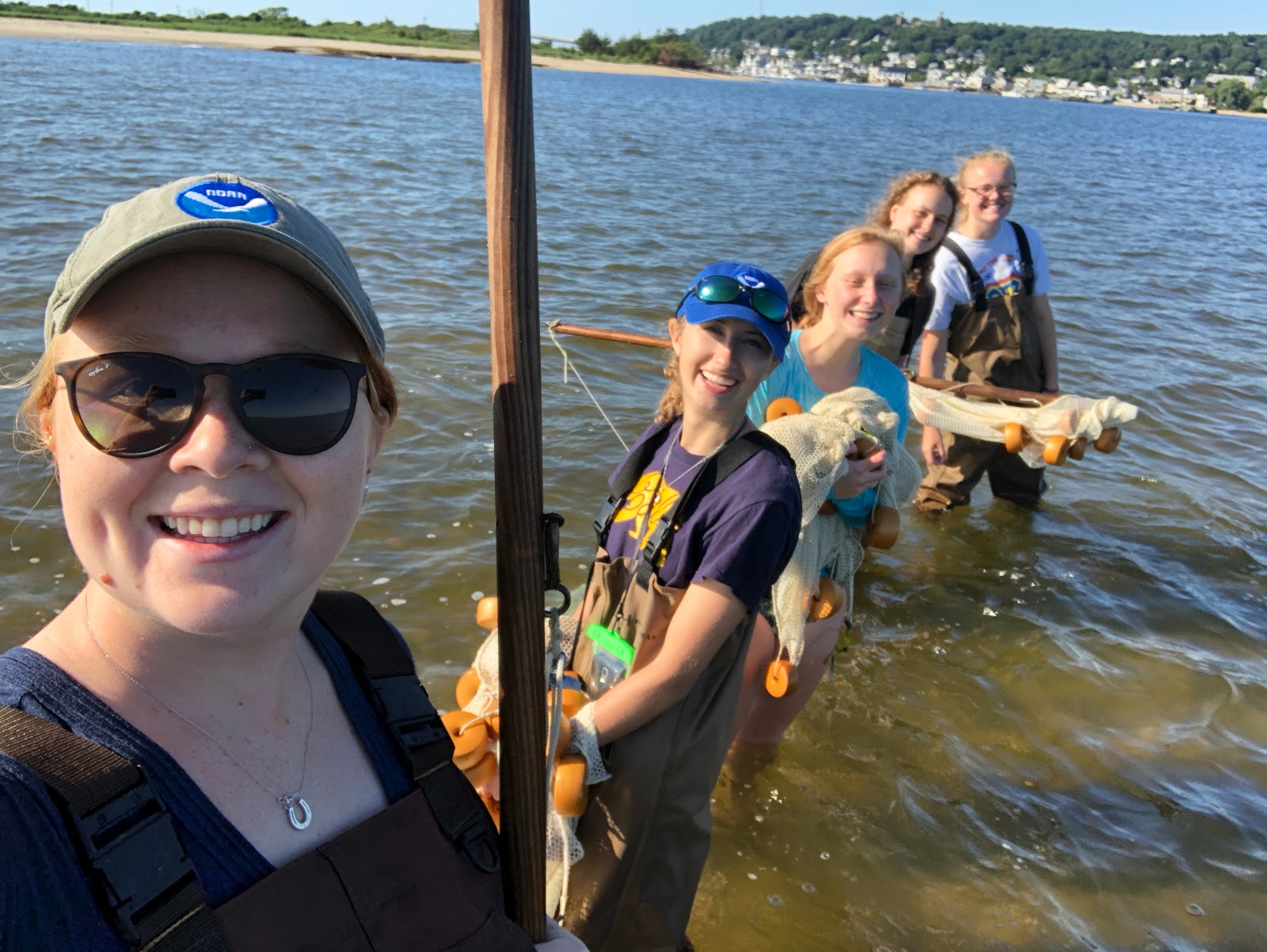
Howdy from Texas! I'm Taylor Cubbage, a 2017 NOAA Hollings scholar about to graduate from Texas A&M University at Galveston this spring with a degree in marine biology. My undergraduate career fostered an interest in fishes and how they are impacted by their changing environment, so the opportunity to study the effects of eutrophication (excess nutrients) on fish reproduction for my internship was a perfect fit! I got to spend my summer at the NOAA James J. Howard Marine Sciences Laboratory on the beautiful Sandy Hook, a National Recreational Area in New Jersey. I worked with Dr. Chris Chambers who is world-renowned for his studies on larval fish development. Together, we designed a project to test the effects of hypoxia (low oxygen caused by excess nutrients, warming sea temperatures, and natural fluctuations) on the fertilization success of Atlantic silverside eggs. My summer was filled with perfecting experimental protocols and seining along Sandy Hook's beaches — I’m the second student from the left, helping the team haul in this 100-foot seine! I was able to put together a presentation just in time for the NOAA Student Science and Education Symposium in July 2018. After working all summer with some amazing researchers, technicians, and fellow interns, I got to travel back to New Jersey a few weeks later to present my research at the American Fisheries Society offsite link meeting, seeing my co-workers again and networking with new faces. The Hollings Scholarship has provided myself and so many other students the chance to experience new places and ecosystems, contribute to national research efforts, and make extensive connections that will last a lifetime. Keep an eye out for the 2020 undergraduate scholarship application in September.
February 26: Kate Dubickas
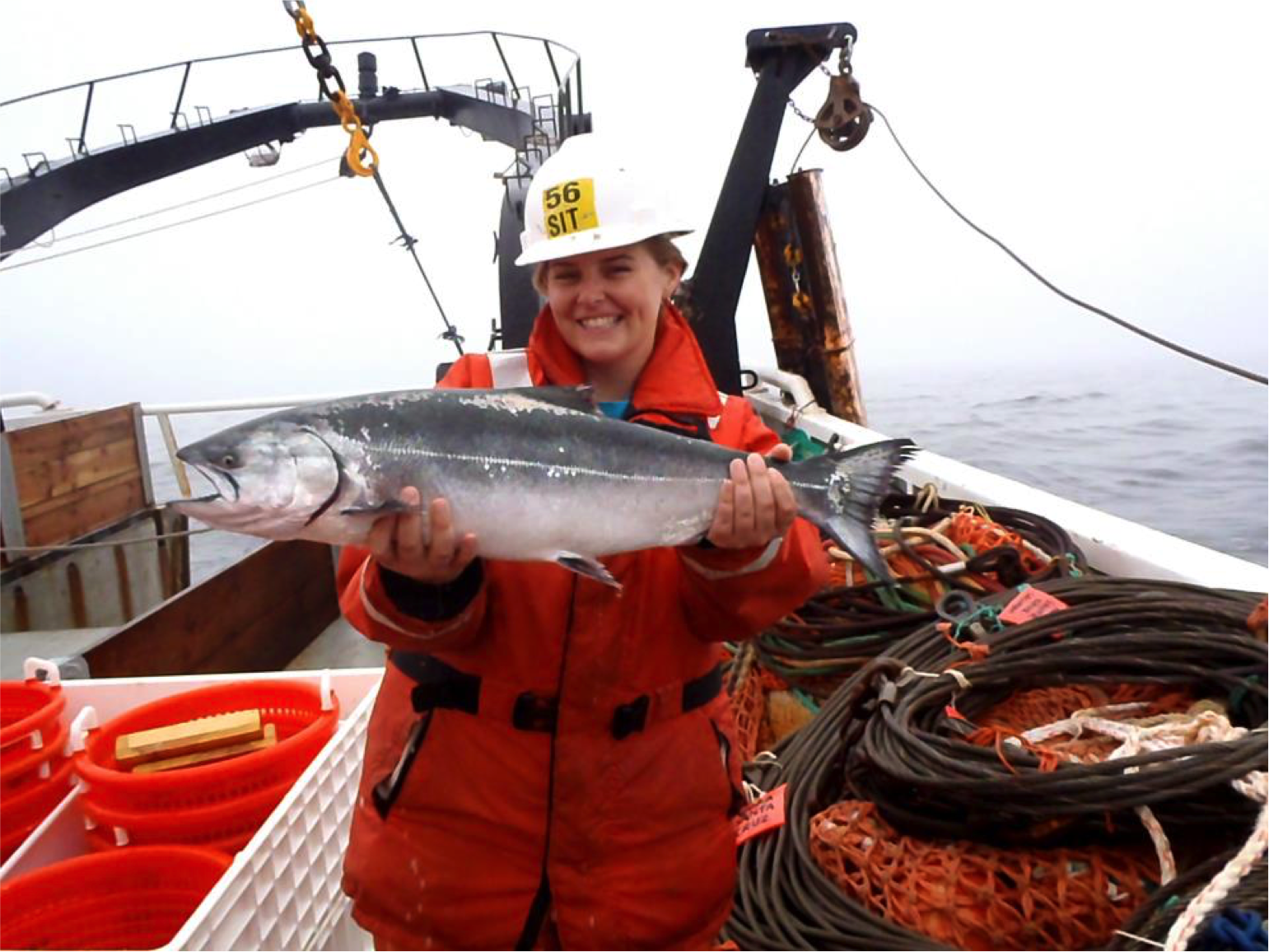
I’m Kate Dubickas, former NOAA Hollings scholar, here to say hello from the 2019 Association for the Sciences of Limnology and Oceanography (ASLO) Aquatic Sciences Meeting (presentation details below)! In the summer of 2012, I traversed the country, leaving the Mississippi Gulf Coast behind landing in Santa Cruz, California. At the Southwest Fisheries Science Center Fisheries Ecology Division, I spent my Hollings internship analyzing gut contents of adult Chinook salmon collected off the Oregon and California coasts. Now, many years since my internship, I can accurately say that this opportunity was life-changing and offered insights into an inspiringly different American culture and ecosystem! To understand salmon foraging habits, I dissected stomachs from over 60 salmon and identified the types and quantity of animals, typically zooplankton, found within their guts. My sampling period included fish from 2011 and those I collected myself aboard the R/V Ocean Starr in 2012, like this beautiful fish! My results showed a significant shift in the composition of prey items between years. My Hollings experience undoubtedly helped pave the way to my current pursuits as a Master's student at the University of South Florida studying zooplankton population dynamics before and after the Deepwater Horizon oil spill. Just as importantly, the network of Hollings friends I met through the internship program, namely during our time at NOAA Headquarters, has continued to be a huge part of my early career development. Hollings connected me with other marine and atmospheric scientists whom I continue to collaborate with on scholarship essays or grant proposals. I will be presenting my research on, “Zooplankton Community Structure in the NE Gulf of Mexico Before and After the Deepwater Horizon Oil Spill” TODAY (February 26) from 10-10:15 am, room 208 A/B. Come meet me and other NOAA scholars at ASLO 2019!
February 19: Teresa Giandonato
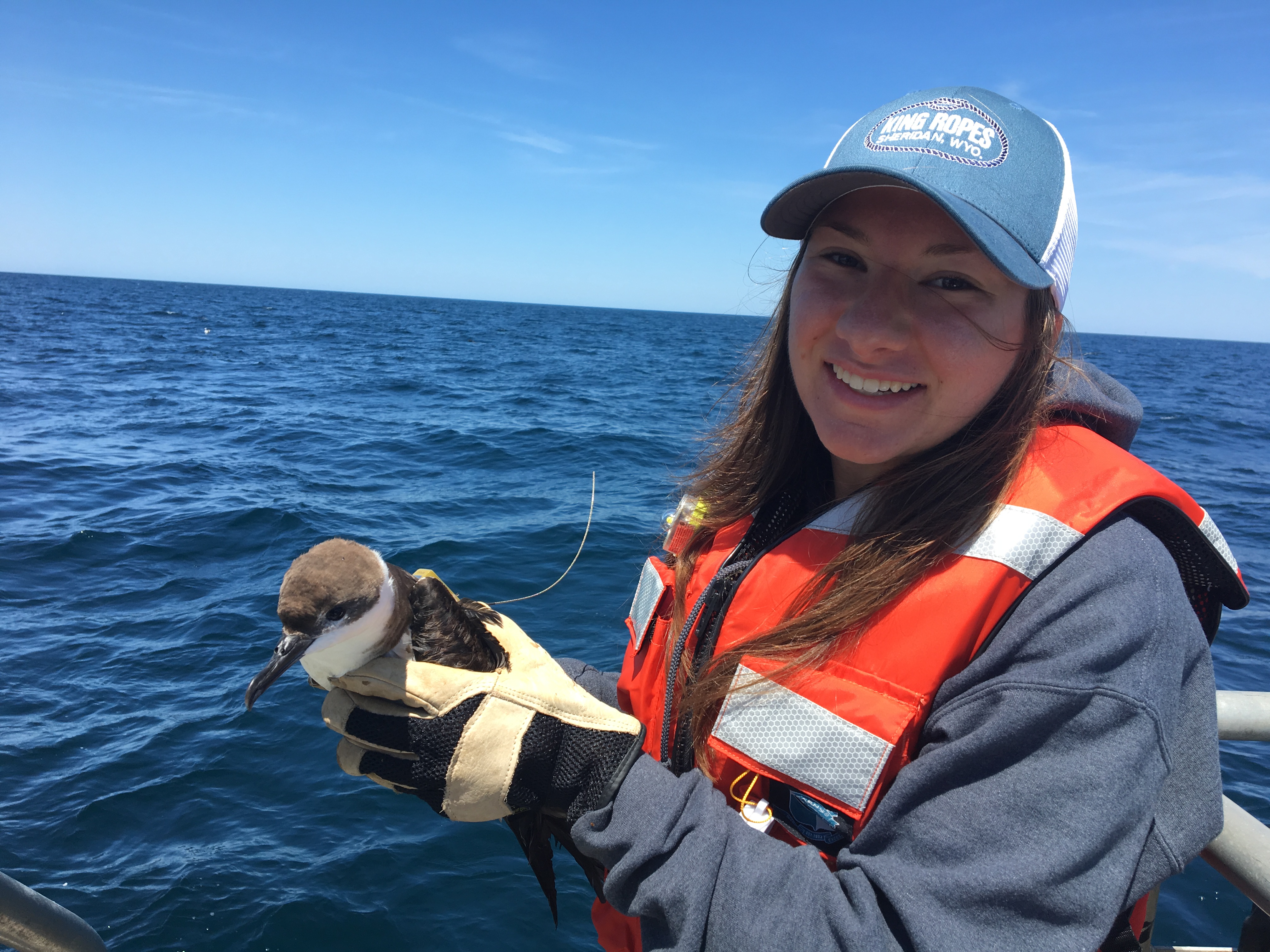
My name is Teresa Giandonato and this picture was taken on one of the best days of my life. I spent my summer internship as a 2017 NOAA Hollings scholar in Cape Cod, Massachusetts, where I was able to participate in some pretty incredible research about the ecosystem of Stellwagen Bank National Marine Sanctuary. My project focused on the lipid content of northern sand lance, which are readily preyed upon by seabirds like this great shearwater. If you had told me five years ago that I would have spent a summer on the coast studying marine biology, this Colorado native would have thought you were crazy. The application for the 2019 scholarship is now closed, but, for you rising sophomores, there’s next year! If you are reading this and thinking about applying to the Hollings Scholarship program, check back in September. You never know what life-changing experiences it could lead to.
February 12: Logan Kline
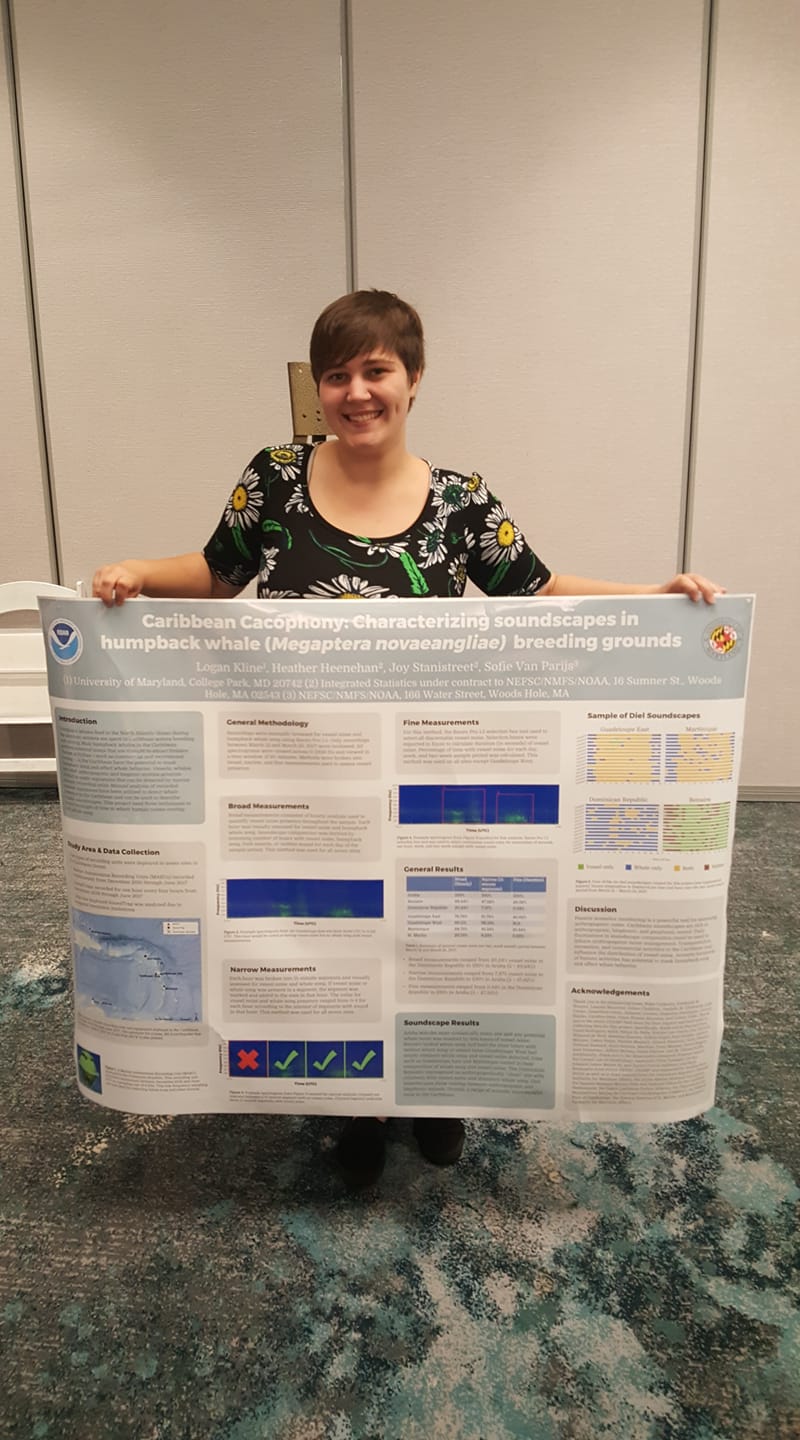
Have you ever wanted to listen to whales singing and dolphins squeaking? Luckily for me, that's exactly what I got to do during my summer internship with NOAA! Hi everyone, I'm Logan Kline, 2017 NOAA Hollings scholar. This past summer, I was able to work in Woods Hole, Massachusetts, for the Passive Acoustics Group of NOAA Fisheries. Here I am at the American Cetacean Society conference in California presenting my research on vessel noise in the Caribbean. I interpreted acoustic (sound) data collected by hydrophones in the Caribbean Sea and quantified vessel and humpback whale presence. Vessel sounds can alter cetacean behavior, and it was great to help provide research to such an important topic! I pursued this project specifically because I had not done scientific research before, I didn't know anything about whales or acoustics, and I had never been to Cape Cod. My opportunity with the NOAA Hollings Scholarship gave me all of these experiences and provided me with an avenue into my career. I'm now back in Woods Hole post-graduation working my first full-time job in research with the Passive Acoustics Group! Prospective scholars, you don’t want to miss out on this amazing scholarship — submit your application ASAP!
February 5: Elizabeth Ashley
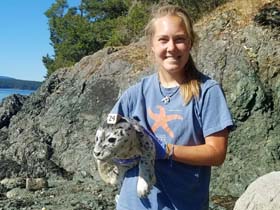
Is that seal wearing a party hat? Nope, it’s a wooden ID tag! I’m Lizzy Ashley, a 2017 NOAA Hollings scholar currently studying at the University of Georgia offsite link. I spent last summer in beautiful Friday Harbor, Washington, interning with The San Juan County Marine Mammal Stranding Network offsite link. I completed a research project investigating heavy metal contamination in harbor seals, which allowed me to improve my skills in R and GIS, quantitative software programs. I also responded to reported sightings of distressed marine mammals with a wonderful team of scientists, fellow interns, and volunteers. We would drive or boat to the location of the stranding, gather data, and decide whether to leave the animal, relocate it, or take it to rehabilitation. For a recently dead animal, we would collect it and conduct a necropsy. This internship was the perfect way to unite my interests in marine conservation, wildlife health, and public outreach. Shout-out to the team: The Whale Museum offsite link, SeaDoc Society offsite link, and NOAA Fisheries West Coast! Here, I am about to release a stranded harbor seal pup after a health assessment. I hope you consider applying for a NOAA undergraduate scholarship — it will change your life! Applications are open until February 15.
January 29: Deseret Weeks
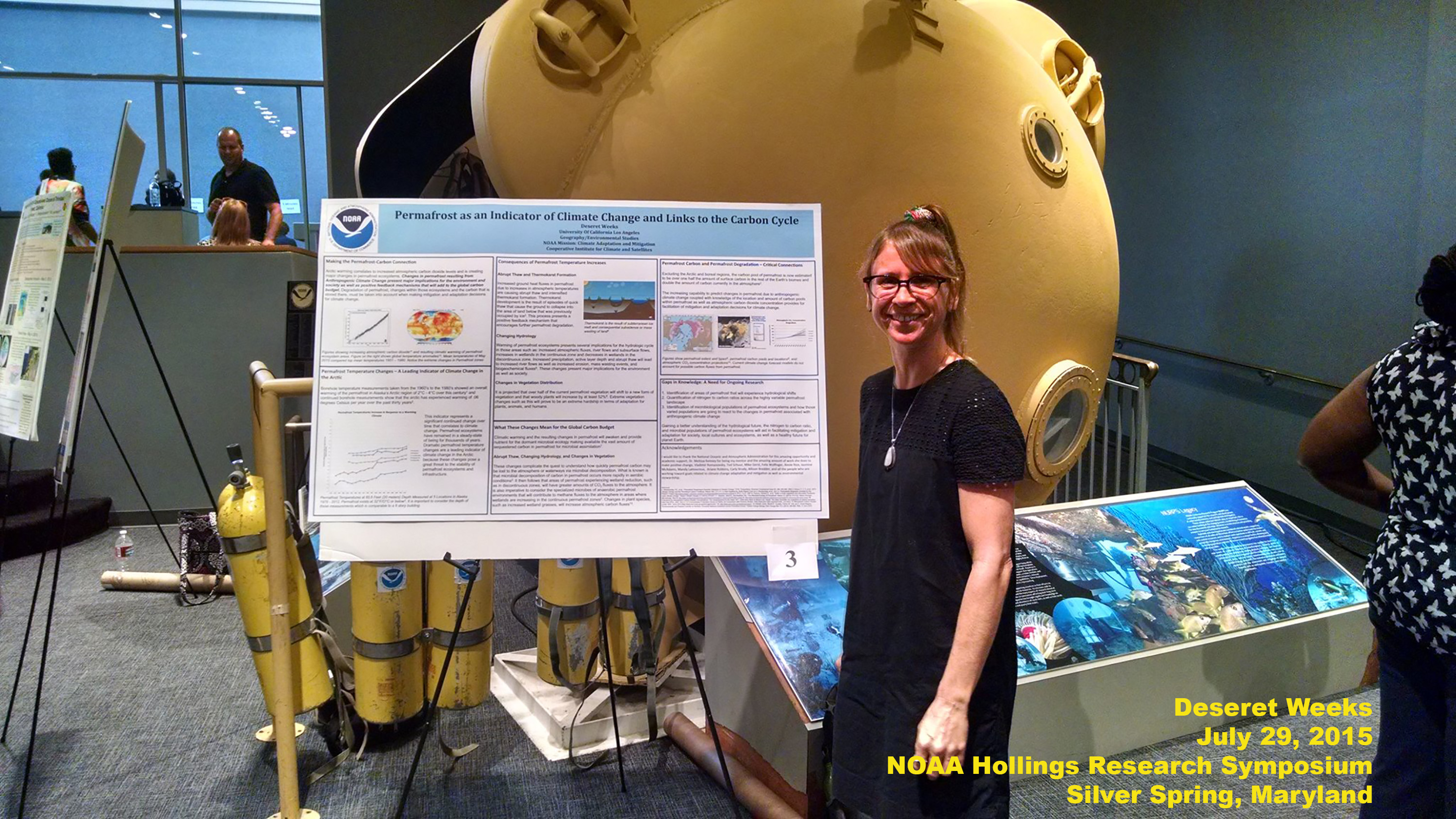
I’m Deseret Weeks, a NOAA Hollings Scholarship alum from the class of 2014. During my summer internship, I worked with Dr. Melissa Kenney from the University of Maryland offsite link to develop indicators of climate change for the National Indicators System. Developing permafrost as an indicator was especially exciting since it has recently become an important focus of the global carbon budget. Here I am presenting my research at the NOAA Science and Education Symposium. While working with Dr. Kenney’s team of scientists, I also learned effective methods of communicating scientific data to broad audiences. My experience as a Hollings scholar and my work with Dr. Kenney has contributed to the development of my own research interests involving global change, such as climate change, biodiversity loss, and chemical pollution. There’s still time to apply! The application deadline was EXTENDED until February 15, 2018.
December 18: Amanda Ceroli
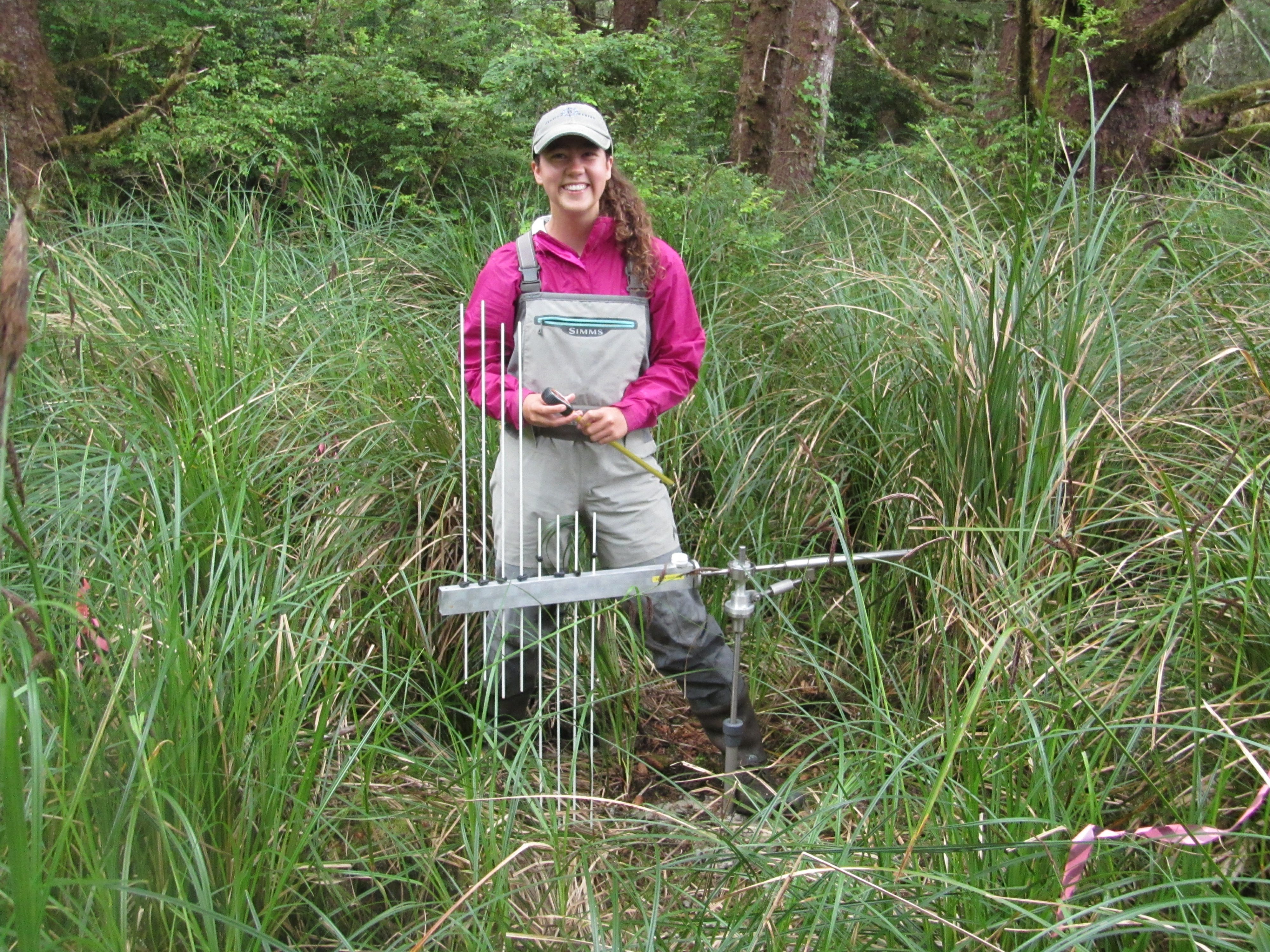
Did you know that estuaries and coastal wetlands serve as a buffer from ocean-borne natural disasters? Therefore, their health is important for sustaining our coastal communities. Hi all, I'm Amanda Ceroli, a 2017 NOAA Hollings scholar. This past summer I worked in Charleston, Oregon, with the South Slough National Estuarine Research Reserve offsite link (NERR) for my internship. I helped with many ongoing research projects including my own which investigated wetland's resiliency to sea level rise. Here I am conducting the base measurements for determining yearly sediment accretion in the NERR's newly obtained wetland site. This is a fantastic opportunity, I encourage everyone who is eligible to apply!
December 11: Rachel Housego
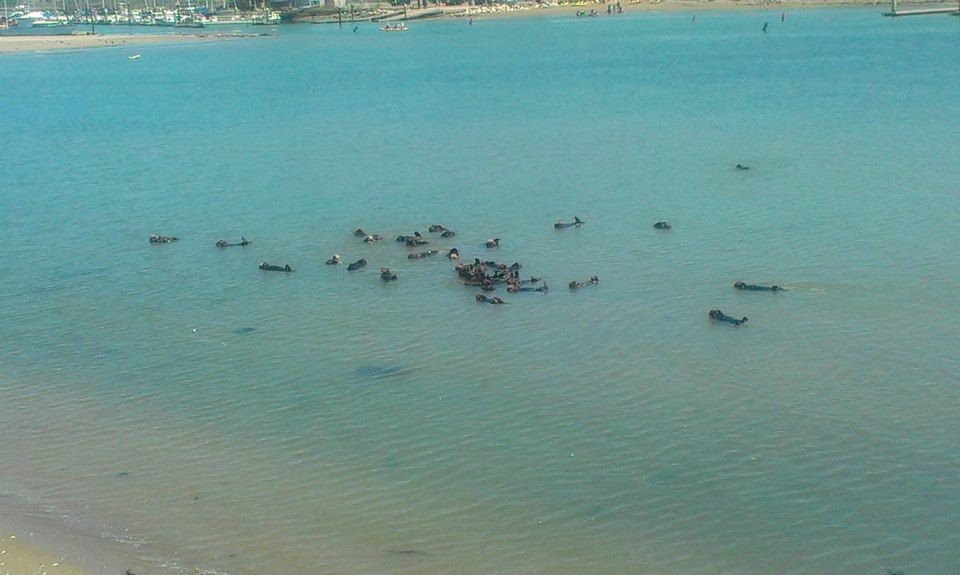
Hi all, I’m Rachel Housego, a 2012 NOAA Hollings scholar and current Ph.D. student in the Massachusetts Institute of Technology-Woods Hole Oceanographic Institution (MIT-WHOI offsite link) Joint Program. During my internship at NOAA’s Monterey Bay National Marine Sanctuary, I spent time speaking with the public about animals, such as the sea otter, that live in the sanctuary. Fun fact: A group of floating sea otters, like the one seen here, is called a raft. Floating otters keep their paws out of the water to help conserve their body heat, which can make them look like they are meditating. I also analyzed spatial and temporal trends in water quality data from a volunteer monitoring program called Snapshot Day. Snapshot Day aims to increase information and public awareness about water quality issues affecting watersheds that drain into the sanctuary and can impact both people and wildlife.
December 4: Anna Lowien
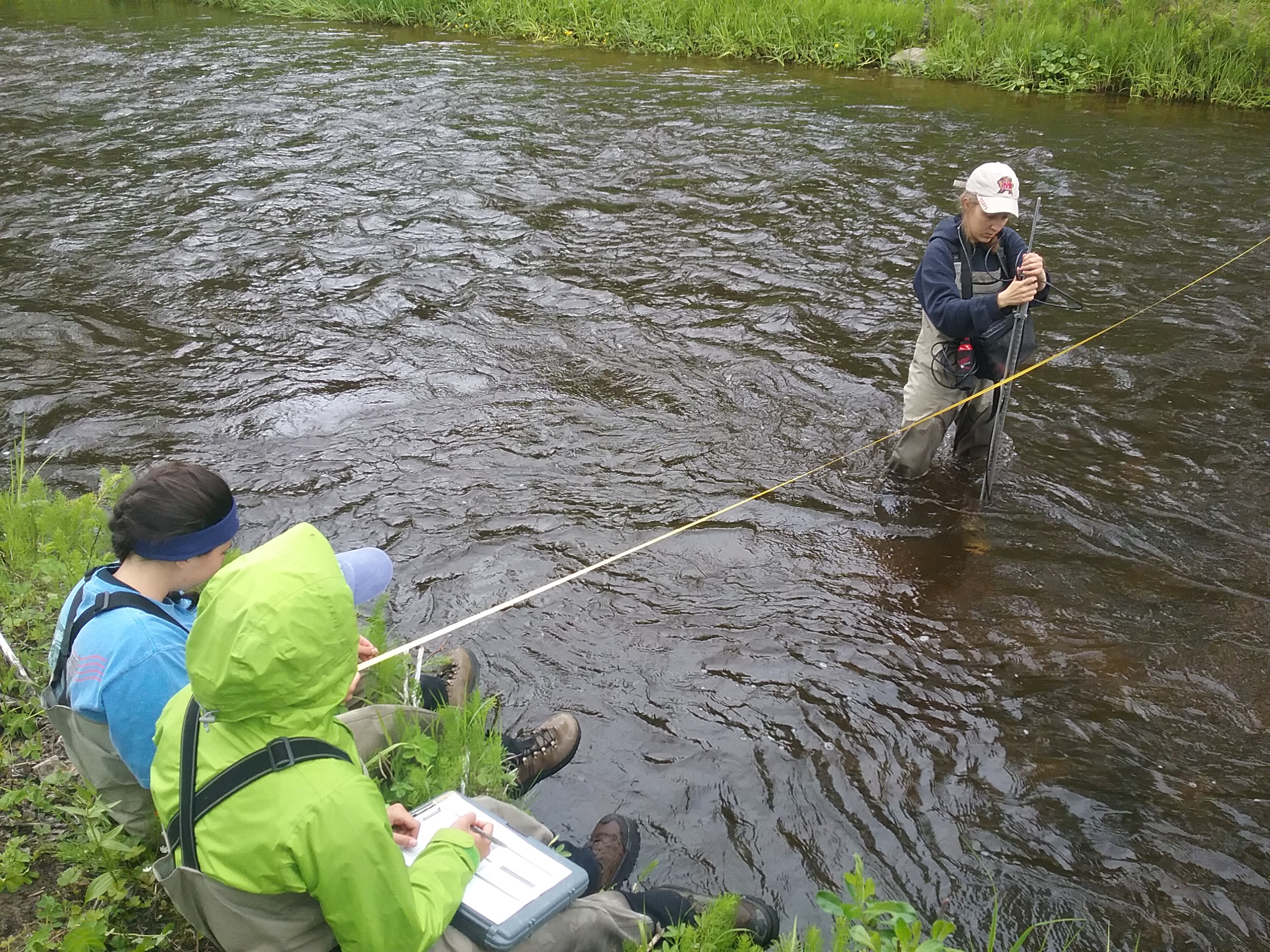
My name is Anna Lowien, NOAA Hollings scholar class of 2017. This past summer I interned at the Kachemak Bay National Estuarine Research Reserve located in Homer, Alaska! Here I am collecting water velocity measurements of a salmon-bearing river in the Kenai Lowlands. As part of my Hollings project, I used the field data that I helped collect to calculate river discharge. I assessed hydrologic variability across four watersheds in order to better inform natural resource management decisions regarding salmon fisheries. My experiences in Alaska as part of the NOAA Hollings Scholarship Program have inspired me to pursue graduate studies, and I hope to return in the future to continue hydrologic research!
November 27: Jin-Si Over
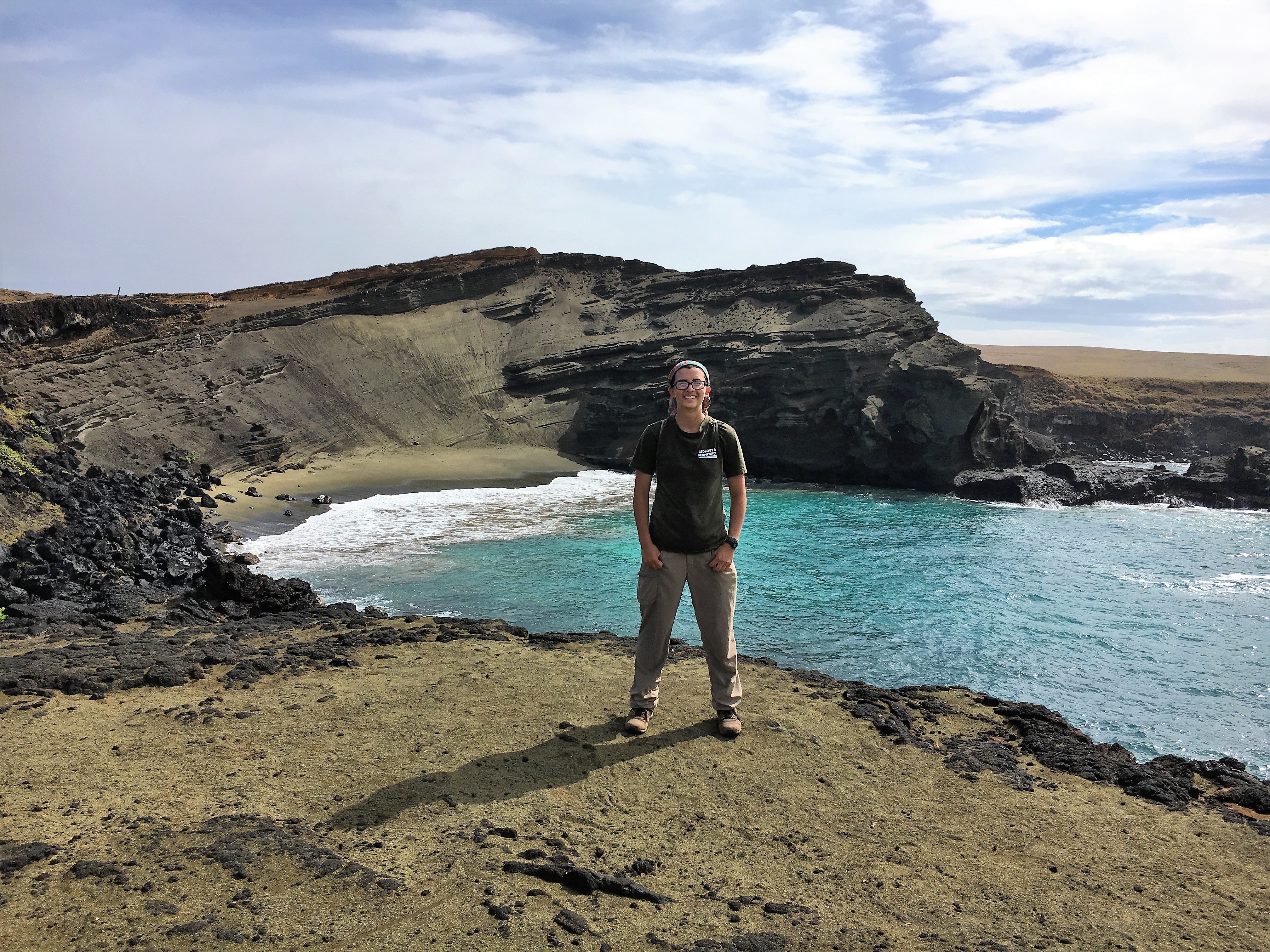
Greetings from Canada! I hope everyone in the United States had time over Thanksgiving to work on their scholarship applications. I'm Jin-Si Over, a 2015 NOAA Hollings scholar currently getting my master’s at the University of Victoria in British Columbia offsite link. I'm going to quickly rave about my internship looking at shoreline change in Hawaii sponsored by Hawaii Sea Grant offsite link and the Coastal Geology group at University of Hawaii at Manoa offsite link. I learned how to use orthophotogrammetry and quantified beach erosion over the last few years, which is accelerating with sea level rise and with human shoreline hardening. I was also able to attend the International Coral Reef Conference, talk with local policy makers, and travel to all the Hawaiian islands, where I got to see a lava flow and snorkel with sea turtles! For my research, I was able to visit many beaches, and here I am at one of my favorites, the green sand beach at Papakolea. After my NOAA internship, I was able to present my research at the American Geophysical Union (AGU) conference. My experience with NOAA is something I will never forget nor can I reiterate enough how exceptional the program is — science has taken me amazing places...where will it take you?
November 20: Cuong Tran
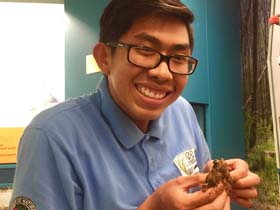
I’m Cuong Tran, a 2017 NOAA Hollings scholar, here to tell you about my experience during my summer internship. With a warming planet, coastal communities face erosion from rising sea level and anthropogenic impacts from hardened infrastructure. My project, centralized in the Ohio, Lake Erie region at the Old Woman Creek National Estuarine Research Reserve, sought to determine the best practices for communicating how shoreline properties are at risk from the effects of erosion. I also studied how to improve communication between the scientific community and watershed property owners, providing them with sustainable solutions. In addition to my work, I was assigned a multitude of tasks such as taking care of the animals in the visitor center, teaching school groups about watershed-estuary-Great Lake connections and the effects of human impacts, and leading weekly kayak trips on the estuary. Thanksgiving break is fast approaching — it is the perfect time to get your applications submitted!
November 13: Heather Mortimer
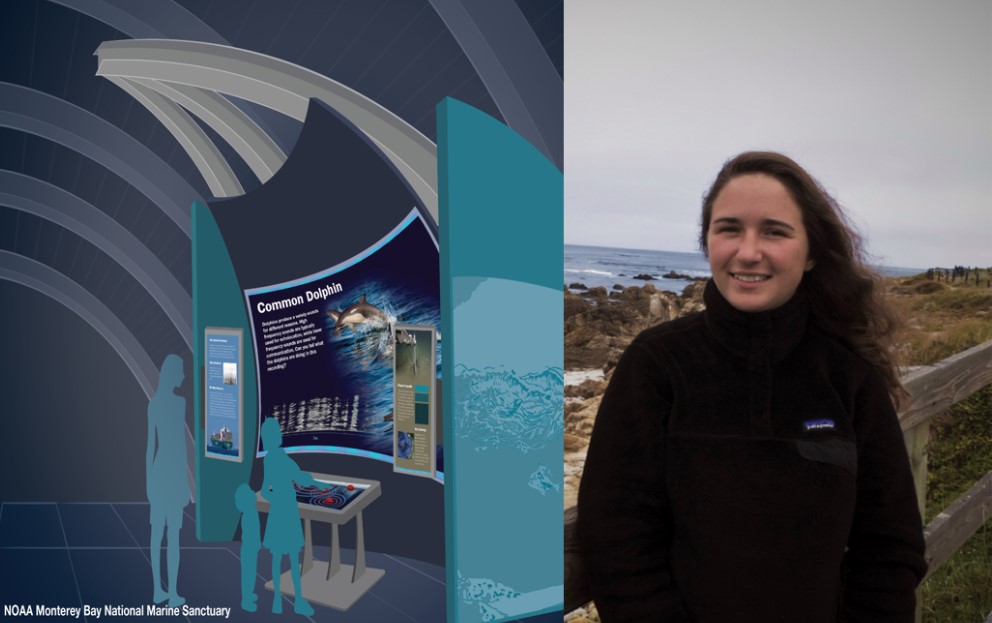
My name is Heather Mortimer, and I’m here to tell you about my experience as a 2016 NOAA Hollings scholar. I had the opportunity to spend a summer in Santa Cruz, California, at the Monterey Bay National Marine Sanctuary, where I helped pilot a citizen science program and develop a multi-sensory exhibit on ocean noise for the Sanctuary Exploration Center. This conceptual drawing shows visitors exploring sounds recorded by the Monterey Bay Aquarium Research Institute at an interactive station. I graduated from the University of Maryland, Baltimore County offsite link this past May with a degree in science communication. Now I work on NASA’s GLOBE Observer team as a graphic designer and technical writer, where I get to apply the skills that I gained as a NOAA Scholar every day. Keep working on those scholarship applications!
November 6: Adrian Teegarden
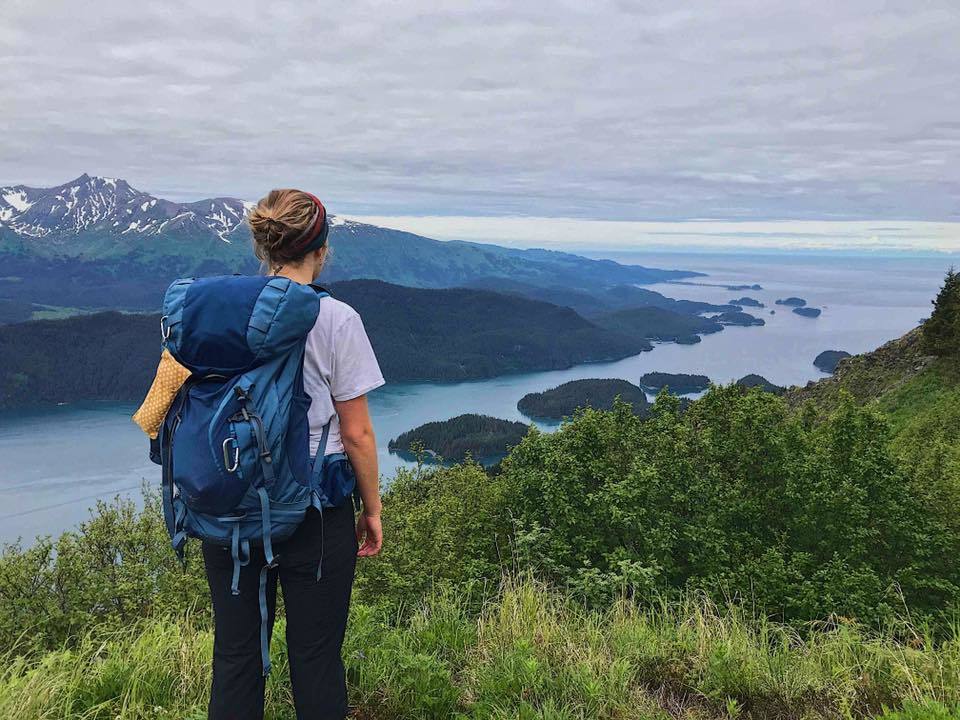
Howdy and welcome! I am Adrian Teegarden, a current NOAA Hollings scholar. My internship this summer was with the NOAA Kasitsna Bay Lab in Homer, Alaska — my new favorite place on Earth! I had a truly phenomenal experience studying zooplankton, conducting fieldwork, and communicating science with art with the help of inspiring mentors. On Kachemak Bay, I observed killer whales, sea otters, bald eagles, and puffins while in the field. I conducted hard shell clam abundance surveys, zooplankton tows, physical oceanography surveys, and beach seining with the Kachemak Bay National Estuarine Research Reserve offsite link and the Alaska Department of Fish and Game. Alaska has some of the most beautiful landscapes (check out this view of Grace Ridge), and I am enormously grateful to the NOAA Hollings Scholarship Program for sending me there to study its diverse ecosystems.
October 30: Anjali Boyd
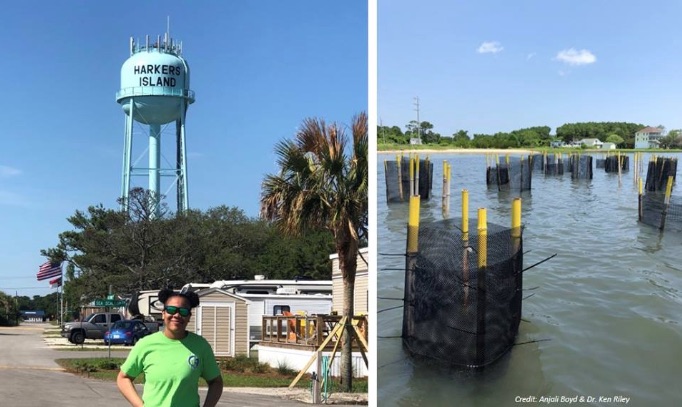
I’m here to motivate you to get those NOAA scholarship applications submitted! My name is Anjali Boyd, 2017 NOAA Hollings scholar. This past summer I had the opportunity to design my own field-based research project with mentors from Duke University offsite link and the NOAA Beaufort Lab. Here I am at my field site in Harkers Island, North Carolina. I examined how pinfish (Lagodon rhomboids) affect seagrass health and productivity by setting up cages to include or exclude predators. My experience was amazing — it was full of hands-on field experience and networking opportunities! In addition to conducting research for my project, I had the opportunity to assist other labs in the field, such as the NOAA Beaufort Lab Sea Turtle Research Program. My Hollings experience helped solidify my interest in attending graduate school and obtaining my Ph.D. in marine ecology. I hope to publish the results from my field experiments in the spring of 2019!
October 23: Julie Chase

Whale hello there and welcome. My name is Julie Chase and I am a 2017 Hollings scholar currently pursuing a marine biology degree and a Master of Arts in teaching at the University of South Florida offsite link. I spent this past summer working at the Olympic Coast National Marine Sanctuary in Port Angeles, Washington, where I developed and led summer camps for kids ages 5–12. The camps included hands-on activities such as beach seines, plankton tows, and ocean acidification experiments, all of which inspired campers to learn more about protecting our ocean. The most popular activity involved visiting Mike, a life-size replica of a southern resident killer whale (J-26), pictured here. I can’t wait to use what I learned over the course of my internship in my future career as a high school biology teacher. This internship was a once-in-a-lifetime experience!
October 16: Kat Mowle
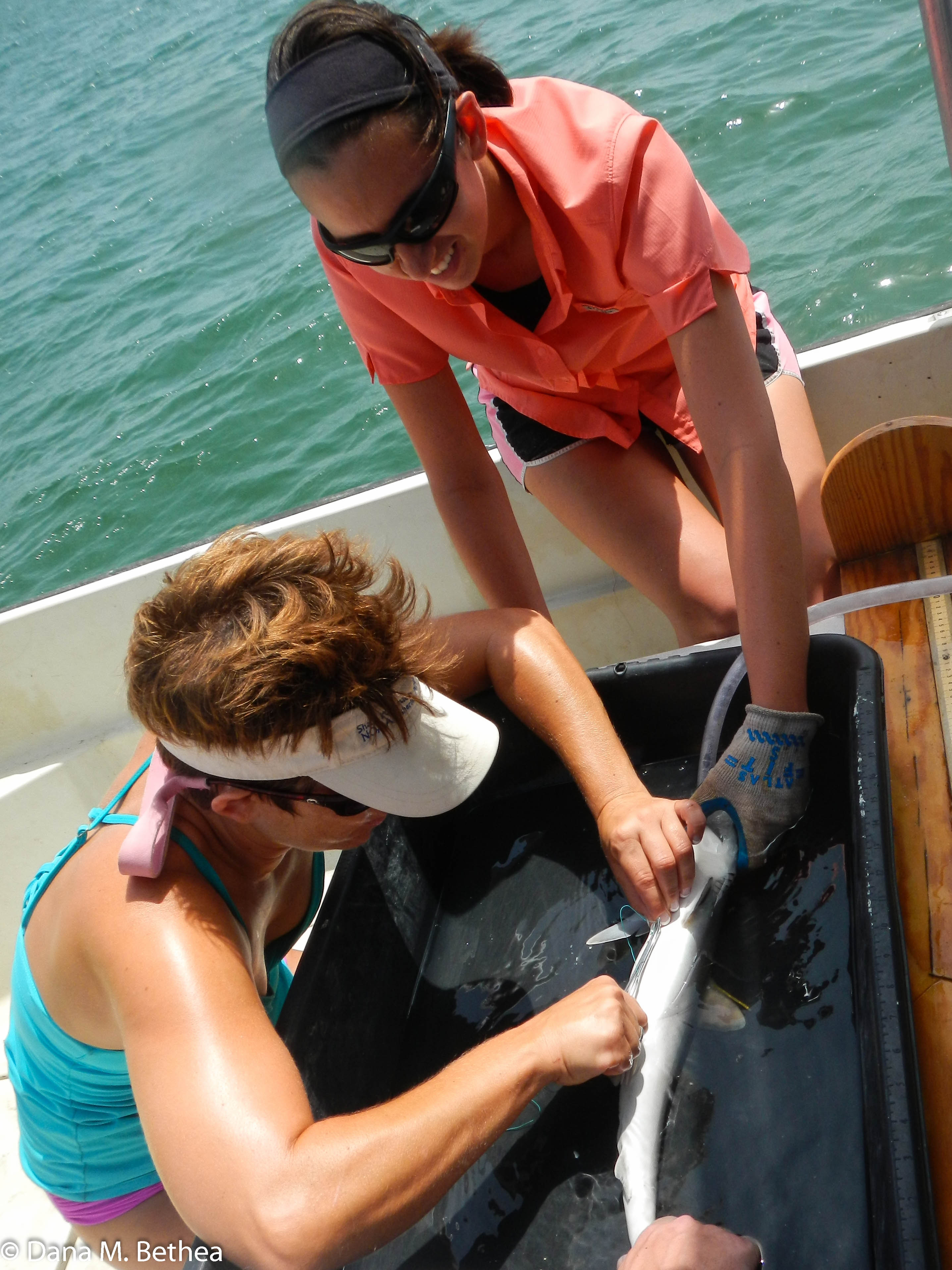
Aloha, everyone! My name is Kat Mowle. I am a NOAA Hollings scholar alum from the class of 2013. I graduated with my B.S. in Marine Biology from Hawaii Pacific University offsite link in 2015, and just completed my M.S. in Biology at the University of North Florida offsite link in August. I spent my summer internship in 2014 working with the Shark Population Assessment Group at the NOAA National Marine Fisheries Service Southeast Fisheries Science Center (NMFS SEFSC) lab in Panama City, Florida. Throughout my internship, I assisted the lab scientists with their fieldwork by collecting, handling, and sampling a myriad of elasmobranch species. This experience proved invaluable, as I was able to jump right into the fieldwork component of my master’s thesis since I already had the necessary experience handling sharks. My project also involved conducting a meta-analysis of the relationship between shark maternal size and the number of pups produced in a litter. This project sparked my interest in better understanding the reproductive biology of elasmobranchs to help manage their populations. I ultimately carried this interest into graduate school and completed my master’s thesis focusing on the reproductive biology of the bonnethead shark. In the photo, I am assisting one of my mentors, Dana Bethea, left, as she inserts an acoustic tag into an Atlantic sharpnose shark. Keep working on those applications — the experience is worth it!
October 9: Adrien Bouissou
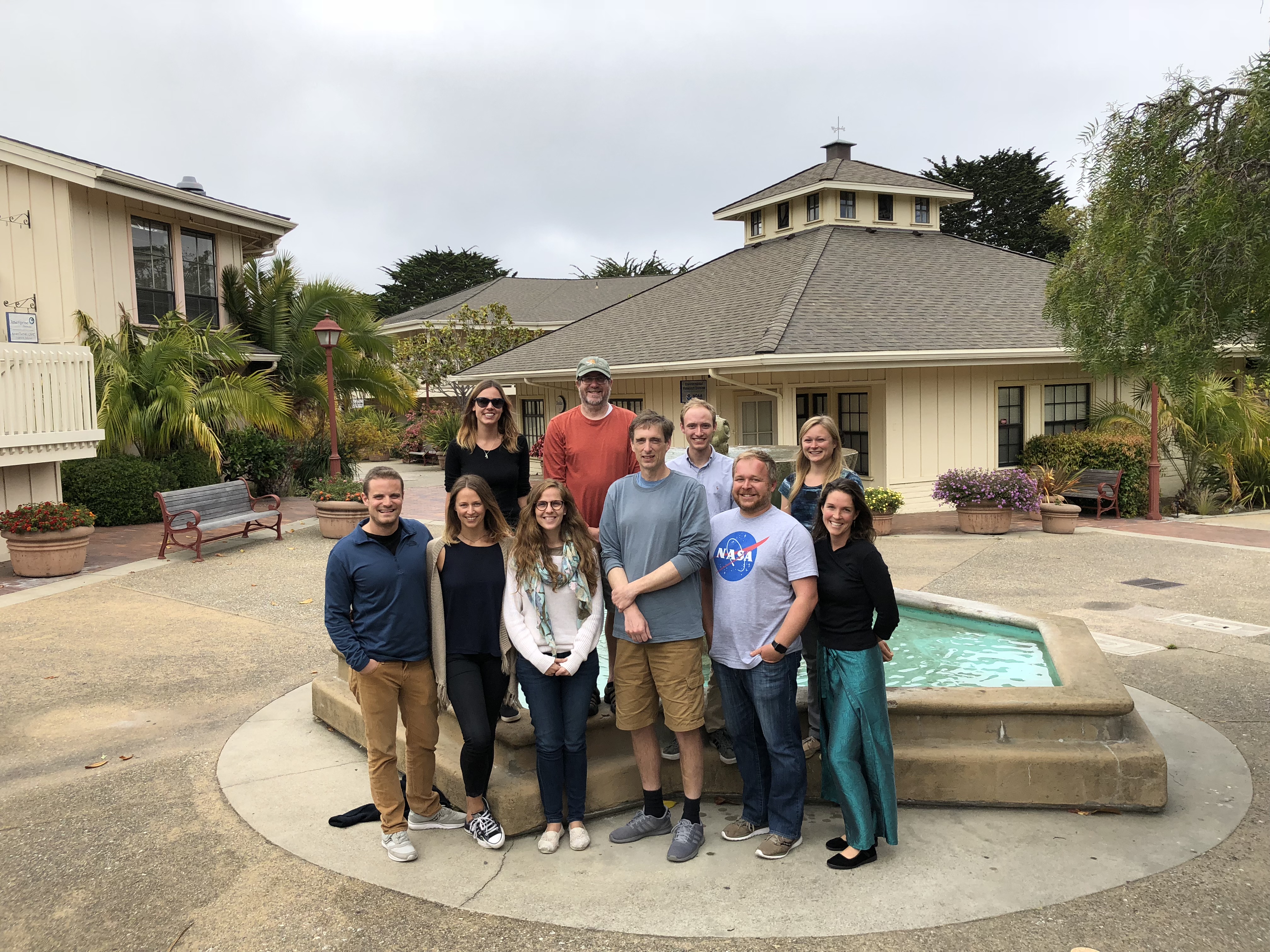
Hello everyone! I’m Adrien, a 2017-2019 NOAA Hollings scholar and biology undergraduate at Humboldt State University offsite link. This past summer, I had the honor of interning at NOAA’s Southwest Fisheries Science Center in beautiful Monterey, California — here I am with my group at the internship site (top row, second from right). I analyzed the relationship between the biodiversity of marine mammal predators and prey species from shipboard sightings and trawls off the coast of Central California. This is part of a broader collaborative project that attempts to characterize the changes in marine life and understand how those changes affect the ecosystem, including the human communities that depend on it. This opportunity allowed me to “try on the shoes” of a marine scientist. Now, I’m inspired to work toward finding solutions to marine issues by understanding how ecological and human communities interact in this era of rapid change.
October 2: Alexis Sturm
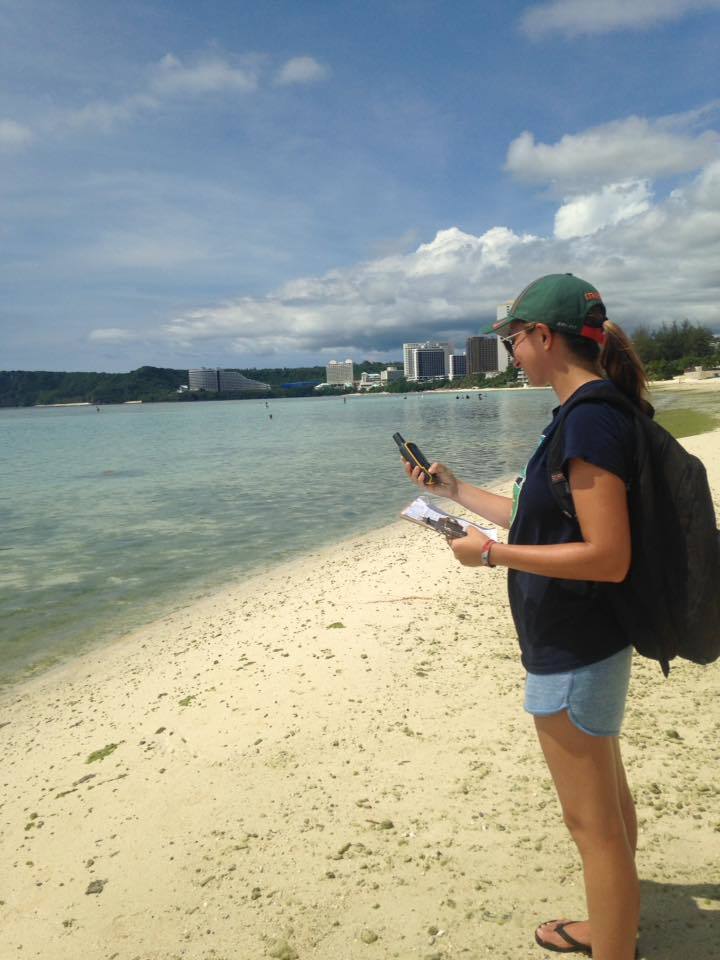
Hi everybody, my name is Alexis Sturm. I am a Hollings scholar alum from the class of 2015, and currently a Ph.D. student at FAU-Harbor Branch Oceanographic Institute offsite link. I spent my summer internship on the island of Guam, working with the University of Guam Marine Lab offsite link. The warm, turquoise waters of this tropical paradise attract thousands of tourists to the island annually. I wanted to understand how people were impacting the nearshore coral reef flat, a marine preserve and popular beach on the island. We combined benthic reef surveys to assess biodiversity and coral health with a community-based beach survey we developed to map human use intensity. Our study suggested that human use is having a significant impact on the physical condition of the corals. Here I am conducting our shore-based human use surveys. With conference funding included as part of the Hollings Scholarship, the following year I was able to go back to the Pacific to present my findings at the Aquatic Sciences Meeting in Honolulu, Hawaii. This internship gave me valuable experience working in the field and helped me with the process of designing and communicating the results of a research project; skills that have become critical to my graduate research.
September 25: Annalise Guthrie
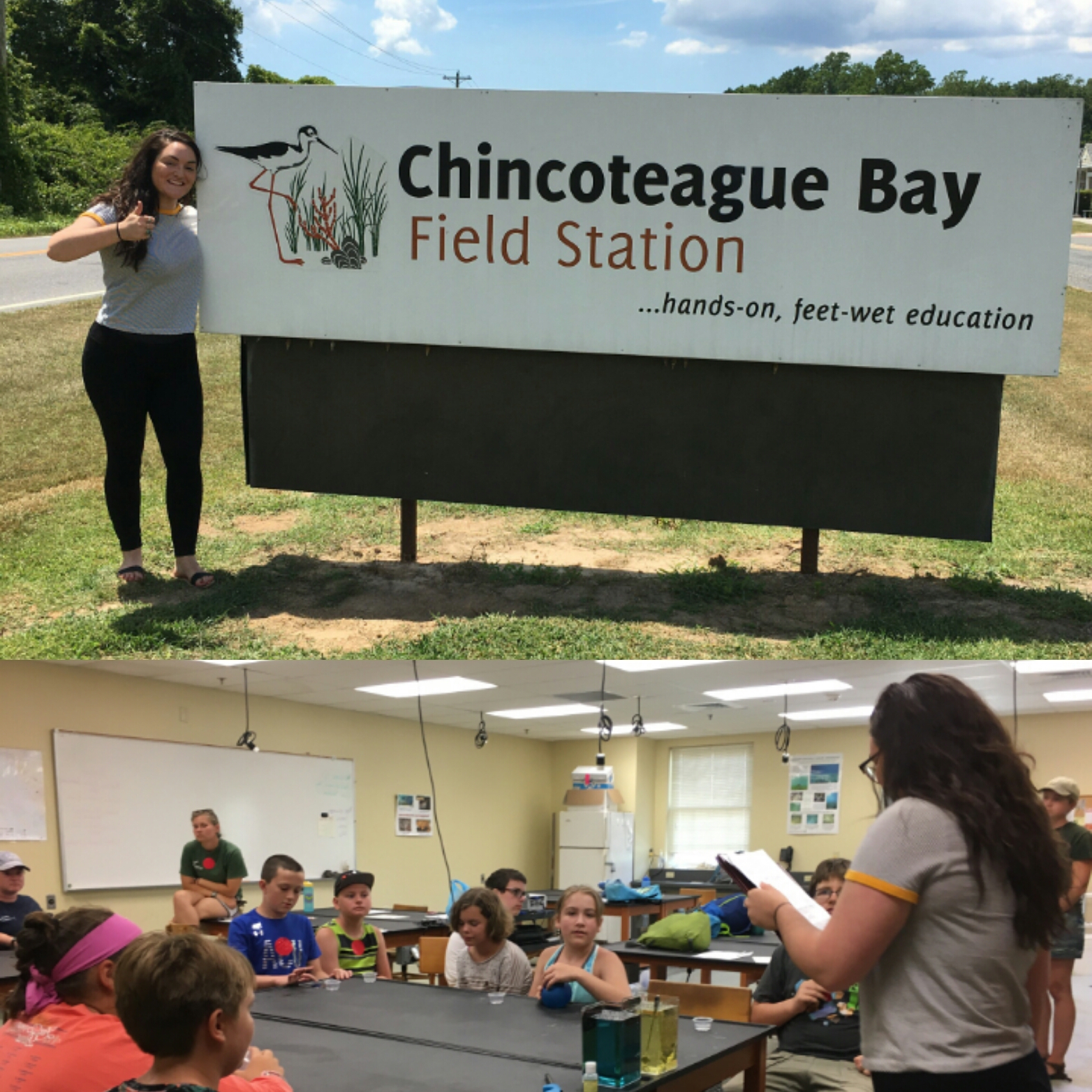
Osiyo and Hello! It's Annalise Guthrie, a 2018 NOAA EPP/MSI scholar. For my internship this summer, I was in Washington, D.C., creating outreach tools that could help scientists successfully communicate ocean acidification to K-12 students. Through demonstrations and activities, the goal of this project was to increase awareness of ocean acidification, its impacts, and to learn about some action-based solutions. Here I am at the Chincoteague Field Station offsite link Science Day Camp in Wallops Island, Virginia, one of the places where I tested the effectiveness of these educational tools. I will be presenting the details of my research at the American Indian Science and Engineering Society next month!
September 4: Radhika Shah
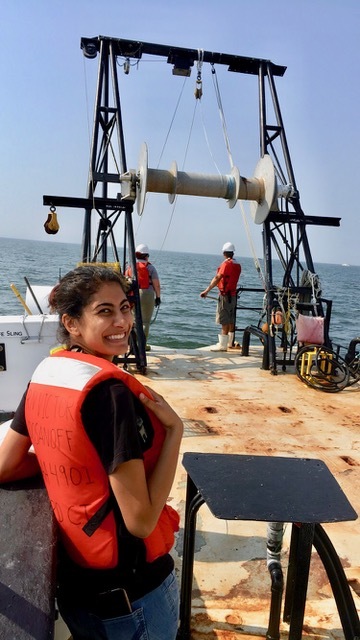
Did you know that oysters poop in two different ways? One of which helps them get rid of anything they don’t want to metabolize! Hey y’all, my name is Radhika Shah — I am a 2017 NOAA Hollings scholar. I spent this past summer in Milford, Connecticut working with eastern oysters and blue mussels. During my internship, we conducted experiments to better understand how ocean acidification and CO₂ rates affect bivalve feeding and filtration. I hope to present my research at conferences such as the Association for the Sciences of Limnology and Oceanography (ASLO) and American Geophysical Union (AGU), and continue researching ocean acidification! I also helped out with GoPro missions to capture video footage of fish near artificial reefs throughout Milford Harbor. Check me out on the R/V Loosanoff.


